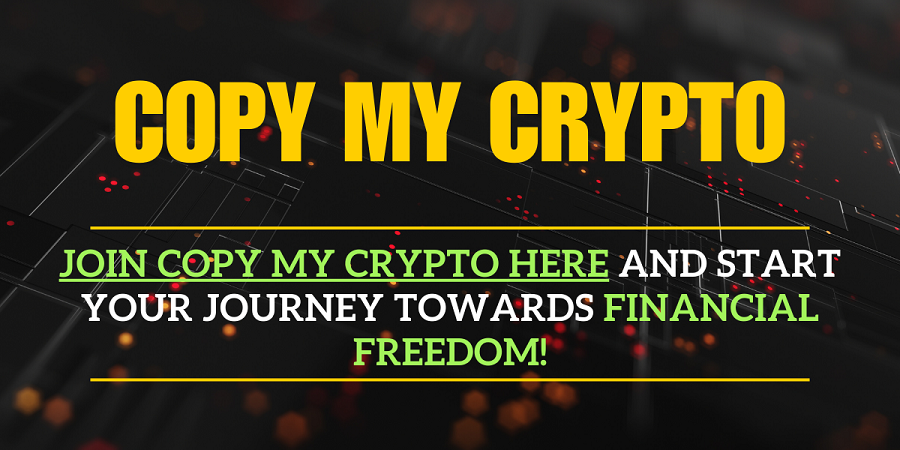Algorand ALGO has established itself as a significant player in the blockchain space since its launch in 2019. While the cryptocurrency has shown promise, its price action has been relatively stagnant compared to other blockchain projects. Founded by Silvio Micali, a renowned cryptographer and Turing Award winner, Algorand is known for its scalable, secure, and decentralized blockchain network. Despite its technical strengths, ALGO has struggled to maintain consistent price growth, leading many investors to wonder: Is there potential for a price surge in the coming bull market?

What is Algorand ALGO?
At its core, Algorand is a decentralized blockchain designed to provide the infrastructure needed for secure and efficient transactions. It operates on a unique consensus algorithm called Pure Proof of Stake (PPoS), which is distinct from other consensus mechanisms like Proof of Work (PoW) (used by Bitcoin) or Proof of Stake (PoS) (used by Ethereum 2.0).
Key Features of Algorand:
- Scalability: Unlike older blockchains like Bitcoin or Ethereum (before its upgrade to Ethereum 2.0), which face congestion and slow transaction speeds during periods of high demand, Algorand’s blockchain is built to scale. It can handle thousands of transactions per second (TPS) without compromising decentralization.
- Security: Algorand ensures transaction security through cryptographic mechanisms, preventing issues like double-spending and ensuring that the network is resistant to attacks.
- Decentralization: The network is fully decentralized, with no central authority controlling the blockchain. Instead, anyone can participate in the consensus process.
By focusing on these three principles—speed, security, and decentralization—Algorand aims to provide a blockchain platform that is both scalable and secure, making it suitable for a wide range of applications, from financial services to digital identities.
History of Algorand
Algorand was founded in 2017 by Silvio Micali, a professor at the Massachusetts Institute of Technology (MIT) and a highly respected figure in the cryptography world. Micali’s vision for Algorand was to create a blockchain that could overcome the “blockchain trilemma,” a concept that suggests blockchains face trade-offs between decentralization, security, and scalability. Most blockchains tend to favor two of these principles at the expense of the third. Algorand, however, aims to balance all three without compromise.
The Algorand mainnet launched in June 2019, and it quickly made a name for itself as a high-performance blockchain. Its focus on Pure Proof of Stake (PPoS), rather than the energy-intensive Proof of Work (PoW) used by Bitcoin, allowed it to process transactions efficiently while remaining decentralized and secure.
Algorand’s native cryptocurrency, ALGO, was introduced with the launch of the mainnet. It is used to secure the network and incentivize participants who validate transactions on the blockchain.
How Does Algorand Work?
To understand why Algorand is gaining attention, it’s important to look at how it works, especially its consensus mechanism and its technical features.
1. Pure Proof of Stake (PPoS)
Most blockchains use a Proof of Work (PoW) mechanism (like Bitcoin), which requires miners to solve complex puzzles to validate transactions. This process is energy-intensive and often leads to network congestion.
Algorand uses Pure Proof of Stake (PPoS), which is a more energy-efficient alternative. Instead of relying on miners, Algorand selects block validators based on the amount of ALGO they hold and are willing to “stake” as collateral. This method allows the network to remain decentralized, secure, and efficient.
In PPoS, every ALGO holder has a chance to participate in the validation process. The higher the amount of ALGO a person stakes, the more likely they are to be selected to validate blocks and receive rewards. Importantly, even those with a small amount of ALGO can be randomly selected to participate, ensuring broad decentralization.
2. Speed and Efficiency
One of the standout features of Algorand is its transaction speed. The network can handle over 1,000 transactions per second (TPS), with the potential for even more as it continues to scale. This makes it one of the fastest blockchains available, capable of supporting high-demand applications like decentralized finance (DeFi) and gaming.
In comparison, Bitcoin can process around 7 transactions per second, and Ethereum’s original network could handle around 15-30 TPS before Ethereum 2.0’s transition to Proof of Stake.
3. Transaction Finality
Algorand offers instant transaction finality, meaning that once a transaction is confirmed, it cannot be reversed. This is an important feature for ensuring trust in the system and preventing issues like double-spending. It contrasts with other blockchains like Bitcoin and Ethereum, where transactions can potentially be “reversed” through a process called a fork.
4. Smart Contracts (Algorand Smart Contracts – ASC1)
Algorand supports smart contracts, which are self-executing contracts with the terms directly written into code. These are used to automatically execute transactions and agreements between parties once certain conditions are met.
Algorand’s version of smart contracts, ASC1, is designed to be both powerful and easy to use. Developers can build dApps (decentralized applications) using these contracts, and the platform supports a wide range of use cases, including DeFi applications, NFTs, and digital identity management.
Algorand ALGO Partnerships and Ecosystem
Since its launch, Algorand has partnered with various companies, organizations, and governments to build and grow its ecosystem. Here are some of the most notable partnerships:
1. The Republic of Italy
Algorand has teamed up with the Republic of Italy to launch a digital euro. This partnership reflects Algorand’s ambition to work with governments and financial institutions to provide blockchain-based solutions for the traditional finance world.
2. The International Blockchain Monetary Reserve (IBMR)
The IBMR is working with Algorand to create a blockchain-based platform for sovereign wealth funds, providing a decentralized financial ecosystem for governments and large-scale financial institutions.
3. Circle & USDC
Algorand is one of the blockchains supporting the USDC stablecoin by Circle. USDC is a widely-used stablecoin pegged to the US dollar, and its integration with Algorand enhances the blockchain’s appeal to DeFi projects, as stablecoins are essential for providing liquidity and facilitating transactions in decentralized finance.
4. NFTs and DeFi
Algorand has seen growing adoption in both the NFT and DeFi sectors. Notable NFT projects and DeFi protocols have started building on the platform, thanks to its scalability and low transaction costs. This growth has been aided by Algorand’s support for NFT marketplaces and the development of DeFi protocols like AlgoFi and Tinyman.
5. Real-World Use Cases: Fractional Real Estate
Algorand ALGO is also making strides in the real estate sector, with projects like Lofty and Vest Equity working on fractionalizing real estate assets. By tokenizing properties, Algorand enables fractional ownership, making real estate more accessible to small investors.
Technical Data and Statistics
Here are some key technical statistics and data points about Algorand:
- Launch Date: June 2019
- Consensus Mechanism: Pure Proof of Stake (PPoS)
- Max Transactions per Second (TPS): 1,000+
- Current TPS (as of 2024): ~38.8 TPS (with peaks of 77 TPS)
- Total Supply of ALGO Tokens: 10 billion (with a circulating supply of around 7 billion)
- Transaction Finality: Instant
- Block Time: Around 4.5 seconds
- Total Transactions Processed (as of 2024): Over 2.4 billion
- Daily Transactions: ~155,000+ transactions per day
Algorand has grown steadily in terms of transaction volume, daily active users, and the number of applications being built on its blockchain. Its technological advancements in transaction speed, scalability, and decentralization have positioned it as a leader in the blockchain space.
Speed and Scalability
In comparison to some of the faster blockchains like Solana, which has reached a maximum of 65,000 TPS, Algorand’s transaction speed is still relatively modest. Its peak recorded TPS is around 5,700, which is impressive but not at the top of the list. That said, it is important to note that Algorand’s transaction metrics consistently hover around 40 TPS, with occasional peaks of up to 77 TPS.
While this isn’t the fastest blockchain in the market, it is certainly competitive. Moreover, Algorand’s real-world usage has been increasing steadily, with about 155,000 transactions happening per day. This uptick in usage indicates that more people are adopting the platform, which could signal potential for future growth.
Expanding Ecosystem
Over the past few years, Algorand has steadily grown its ecosystem, with numerous projects using the blockchain for various purposes. These include decentralized exchanges (DEXs), DeFi platforms, and even NFT marketplaces. However, it is worth noting that Algorand’s ecosystem is still relatively young compared to giants like Ethereum.
Some interesting use cases within the Algorand ecosystem include:
- Fractionalized Real Estate: Algorand has partnered with companies like Lofty and Vest Equity, which are working on tokenizing real estate assets and enabling fractional ownership. As the real estate tokenization sector grows, Algorand could benefit from being one of the early adopters.
- TravelX: A project that tokenizes travel tickets for flexible and efficient booking. This service has been gaining traction, and its use on Algorand could provide the blockchain with a unique real-world application.
- Loyalty Programs and Discount Services: Algorand is also being used for loyalty programs, discounted service providers, and crypto tax solutions. These types of partnerships showcase the versatility of the blockchain in solving real-world problems.
These types of partnerships and use cases show that Algorand is diversifying beyond just DeFi and NFTs, which could help it grow its user base and bring in more institutional and retail investors.

The Current State of ALGO Price and Market Cap
Despite these advancements, Algorand ALGO price has been relatively stagnant. At the time of writing, ALGO is trading around $1.12, significantly lower than its all-time high of $3.28 in 2021. While its price has not reached new highs, it is essential to remember that ALGO has only been through one full bull cycle. In 2021, ALGO surged to over $3, but it has yet to surpass that peak in subsequent market rallies.
Algorand’s market cap currently sits below $1 billion, which could indicate that the project is undervalued relative to its technological capabilities and growing ecosystem. However, as with any cryptocurrency, the market is highly speculative, and there are many factors that could influence the price going forward.
What Could Drive Algorand ALGO Price in the Next Bull Cycle?
While ALGO has seen price stagnation, there are several key factors that could contribute to significant price appreciation in the next bull market.
- User Growth and Adoption:
The biggest driver of Algorand’s potential price increase is likely to be user adoption. As more developers build applications on the Algorand blockchain and more users engage with these applications, the value of the network will grow. The introduction of real-world use cases like fractionalized real estate and travel tokenization could bring new users to the platform, which in turn would increase transaction volume and demand for ALGO. - Ecosystem Expansion:
The ongoing expansion of the Algorand ecosystem is another promising factor. More DeFi projects, NFTs, and other blockchain-based applications are launching on Algorand every day. The stronger the ecosystem becomes, the more valuable ALGO will be, especially if it attracts major partnerships or becomes a preferred blockchain for specific industries. - Marketing and Awareness:
Algorand has struggled with visibility in the crowded blockchain space. Many investors are unaware of its technological strengths or its real-world applications. For ALGO to see significant price growth, the team will need to ramp up its marketing efforts. This could include more public-facing leaders, strategic partnerships, and community engagement to build awareness. - Technological Developments:
Algorand’s team is constantly working to improve the blockchain’s scalability, security, and transaction throughput. If the team is able to significantly increase the blockchain’s speed and capacity to handle even more transactions, it could attract more developers and users, which would likely result in a higher ALGO price.
Will Algorand ALGO Reach Its All-Time High Again?
Reaching its previous all-time high of $3.28 seems unlikely in the near future, especially considering that Algorand would need to massively increase its user base and ecosystem adoption to justify that kind of price. However, with significant growth in the number of daily active users, new real-world applications, and strong marketing efforts, a price target of $2.50 could be achievable within the next bull cycle.
If Algorand’s ecosystem continues to grow, and if the team can bring more attention to its real-world solutions, a $2.50 price could be within reach. However, if Algorand fails to attract new users and developers, the price may struggle to break above the $1.20-$1.50 range.
Conclusion: Is Algorand ALGO a Buy for the Next Bull Cycle?
Algorand has a strong technological foundation and a steadily growing ecosystem. Its blockchain is capable of handling significant transaction volumes and supports various real-world applications, which could drive future growth. However, its price has been stagnating, and the project will need to grow its user base significantly to achieve higher prices.
For investors, Algorand could be an undervalued asset in the current market. While it may not hit its previous all-time high in the next bull cycle, there is potential for growth if the team can successfully scale its ecosystem and attract new users. As with any investment in cryptocurrency, it’s essential to weigh the risks and opportunities carefully.
If you believe in Algorand’s long-term potential and are confident that its ecosystem will continue to grow, now may be a good time to accumulate ALGO. However, as with any speculative investment, it’s important to proceed with caution and conduct your own research before making any decisions.
What do you think about Algorand’s future price? Will it break past its all-time highs, or is it destined to stay in the $1 range? Let us know in the comments below!
If you’re not feeling confident about your crypto investing skills and knowledge, make sure to check out Copy my Crypto, which is the ideal platform for people who lack time or know-how when it comes to investing in cryptocurrencies. You can learn more about it here, on our Copy my Crypto review.





